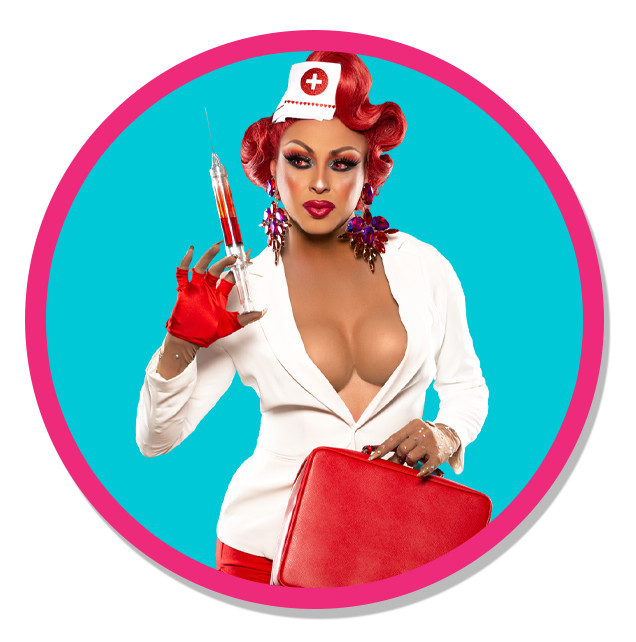
PAYING FOR HIV CARE AND TREATMENT
Paying for HIV Care
HIV care and treatment involves taking antiretroviral therapy (ART) and having regular check-ups with your healthcare provider who will monitor your health status on an ongoing basis.
These things are important because with the proper care and treatment, you can reduce your viral load, protect your health, enjoy a long and healthy life, and reduce the potential of transmitting the virus to others.
But you might have concerns about how to pay for this. There are resources that can help you pay for the care you need.
Private Insurance
Job-Based and Individual Insurance—Many people have private health insurance through their employer (or a family member’s employer), or they have individual insurance they have purchased. Under the Affordable Care Act (ACA), most job-based and individual plans are required to offer new benefits and protections. For example, plans can’t can drop you or deny you coverage just because you have a pre-existing health condition, like HIV. And insurers can’t impose lifetime caps on your insurance benefits. However, you’ll still need to pay any deductibles, copayments, and coinsurance your plan requires. Make sure you read your plan carefully so that you know what your plan will (and won’t) cover.
When you leave a job, you may be able to keep your job-based health insurance for a period, usually up to 18 months. This is called COBRA continuation coverage. With COBRA coverage, you usually have to pay the entire monthly premium yourself, plus a small administrative fee. Your former employer no longer pays any of your insurance costs.
The Health Insurance Marketplace—Established under the ACA, the Health Insurance Marketplace helps uninsured people find and apply for quality, affordable health coverage. Private plans in the Marketplace are required to cover a set of essential health benefits. And, low and middle-income people may qualify for lower costs, based on their household size and income. To see if you can enroll in a health insurance plan or change plans, visit healthcare.gov or find local help.
Federal Resources
If you do not have private health insurance—or you need help because your insurance doesn’t pay for the HIV care and treatment you need—there are Federal resources that may help you.
Getting Help—Figuring out which programs and services you qualify for can be confusing. But don’t worry! There are case managers and benefits counselors who can help you. They know what services are available and can help you get care. Their services are free. You can find one near you by contacting a local HIV/AIDS service organization. Toll-free State HIV/AIDS Hotlines will help put you in touch with agencies that can determine what programs and services you may be eligible for and help you access them.
Here are Federal resources that are available:
- Medicaid—A state and Federal partnership, Medicaid provides coverage for people with lower incomes, older people, people with disabilities, and some families and children. It is a critical source of coverage for many people living with HIV/AIDS. States establish and administer their own Medicaid programs and determine they type, amount, duration, and scope of services within broad federal guidelines. States are required to cover certain “mandatory benefits” and can choose to provide other “optional benefits,” including prescription drugs. The eligibility rules for Medicaid are different in each state, but most states offer coverage for adults with children at some income level. And, under the ACA, states have the option, which is fully Federally funded for the first three years, to expand Medicaid eligibility to generally include people below certain income levels, including low-income childless adults who were previously not generally eligible for Medicaid. As a result, in states that opt for Medicaid expansion, people living with HIV who meet the income threshold no longer have to wait for an AIDS diagnosis in order to become eligible for Medicaid. You can apply for and enroll in Medicaid at any time. There is no limited enrollment period. If you qualify, your coverage can begin immediately. Even if your state hasn’t expanded Medicaid, you should still apply for coverage to see if you qualify under your state’s existing rules. See if you qualify to save in your state..
- The Ryan White HIV/AIDS Program—The Ryan White HIV/AIDS Program works with cities, states, and local community-based organizations to provide HIV-related services to more than half a million people living with HIV/AIDS each year. The program is for those who do not have sufficient healthcare coverage or financial resources to cope with HIV disease. Ryan White fills gaps in care not covered by these other sources. The program is divided into several “parts” to meet the needs of different communities and populations, and includes support for an AIDS Drug Assistance Program (ADAP). To find a Ryan White clinic near you, use the HIV.gov HIV Testing and Care Services Locator.
- The Health Center Program— Health centers provide high quality preventive and primary health care services, including HIV testing and medical care, to patients regardless of their ability to pay. Some patients receive services directly at the health center itself, while others are referred to an HIV specialist in the community. Major investments in the network of community health centers over the past several years have created more opportunities for HIV care delivery. You can find a health center near you by going to the HIV Testing and Care Services Locator.
- Medicare—Medicare is health insurance for people age 65 or older, people under 65 with certain disabilities, and people of all ages with End-Stage Renal Disease. Medicare coverage for eligible individuals includes outpatient care, prescription drugs, and inpatient hospital care. To learn more about Medicare coverage and choices, visit Medicare.gov.
- Federal Programs for Women and Children—There are several Federal programs to help low-income women and children access health care. The Children’s Health Insurance Program (CHIP) provides free or low-cost health insurance coverage for children up to age 19. Each state has its own rules about who qualifies for CHIP. You can apply for and enroll a child in CHIP at any time. There is no limited enrollment period. If the child qualifies, his/her coverage can begin immediately. Visit www.insurekidsnow.gov to learn more and see if you are eligible for coverage or call 1-877-KIDS-NOW (1-877-543-7669). In addition, programs supported by the Maternal and Child Health Services Block Grant, authorized by Title V of the Social Security Act (SSA), serve low-income women, children, and youth with limited access to health care, including children with special needs. Specifically, the Title V Maternal and Child Health program seeks to assure access to quality care, especially for those with low-incomes or limited availability of care.
- American Indian and Alaska Native Programs—The Indian Health Service (IHS) provides health care services—including HIV services—for members and descendents of federally-recognized American Indian and Alaska Native Tribes. For more information, go to https://www.ihs.gov.
- Veterans Programs—The Veterans Administration (VA) is the largest single provider of medical care to people living with HIV in the U.S., supporting over 24,000 Veterans living with HIV. If you are eligible, you may be able to receive HIV care through the Veterans Health Administration. VA offers an online benefits website where Veterans, Service Members, and their families can learn about their health care benefits.
Non-Federal Resources
Patient Assistance Programs (PAPs) are programs administered by pharmaceutical companies to offer free or reduced-cost antiretroviral (ARV) medicines to low-income people living with HIV who are uninsured or underinsured, and who do not qualify for assistance programs such as Medicaid, Medicare, or AIDS Drug Assistance Programs. Each pharmaceutical company has different eligibility criteria for qualifying for their PAP.
The U.S. Department of Health and Human Services, seven pharmaceutical companies, the National Alliance of State and Territorial AIDS Directors (NASTAD), and community stakeholders worked together to develop a common patient assistance program application (CPAPA) and companion document that can be used by patients and providers to access these programs.












